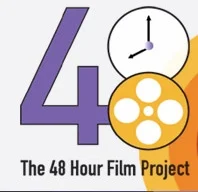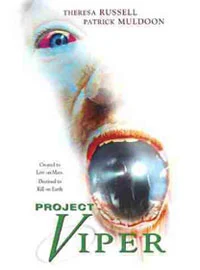Some of the science and SF links originally posted on Google+ , Twitter
, Twitter , and Facebook
, and Facebook over the past few days.
over the past few days.
• Reminder: My live interview with artist Brian Kolm will be on Wednesday, October 3rd and 4pm (Pacific time). More information here: Interview with Artist Brian Kolm of Atomic Bear Press
Imagine a tattoo that monitors your health! This is a concept video created by the Norwich Research Park and University of East Anglia 2012 iGEM Team. The team has so far created six sensing "biobricks", including a nitric oxide sensor. Read more about their project.
• For you next science fiction dance party: Gangnam Style performed in the original Klingon. Let's kill some Romulans!
• The Pokemon Plot: How One Cartoon Inspired the Army to Dream Up a Seizure Gun | Danger Room | Wired.com »
Or, instead of a special weapon, they could just broadcast the flash-flash-flashing Pokemon videos. If it didn't work to cause seizures, it might work to make the enemy run away out of sheer irritation.
• Assembling an Avenger – Inside the Brain of Iron Man | Guest Blog, Scientific American Blog Network »
E. Paul Zehr argues that for Iron Man's suit of armor to work the way it does in the comics and movies, it would have to be directly connected to and integrated with Tony Stark's brain. So is it even possible that our brains are plastic enough to be able to control what are essentially extra limbs and sensors? The tentative answer is yes! Be sure to read the whole article for details.
• Biodegradable electronics here today, gone tomorrow »
Flexible silk, magnesium and silicon-based electronics that dissolve in water - and inside the body - might be the first step towards temporary medical implants that don't need to be surgically removed. Nifty.
• Common Parasite Linked to Personality Changes: Scientific American »
One in five Americans is infected with the behavior-changing Toxoplasma gondii parasite. The infection rate is even higher in other countries. Do you own a cat or eat raw steak? Are you extroverted, but not particularly conscientious? Do you get a lot of traffic tickets? You could be infected too!
• Pictures: Vampire Squid's Surprising Diet Revealed »
Looks can be deceiving! The Vampire Squid turns out to be the only known non-predatory squid.
• Demystifying Science Fictional Terms (+ Reading Recommendations to Help You Understand), Part 4 »
Serious pet peeve: In the The Island of Doctor Moreau, HG Wells does not describe the creation of humanized animals through genetic engineering. Instead the method used is vivisection- direct surgical alterations - and blood transfusion. For some reason that seems more horrifying to me.
Here is the beginning of relevant part of the novel, where Doctor Moreau explains his methodology:
“You forget all that a skilled vivisector can do with living things,” said Moreau. “For my own part, I'm puzzled why the things I have done here have not been done before. Small efforts, of course, have been made,—amputation, tongue-cutting, excisions. Of course you know a squint may be induced or cured by surgery? Then in the case of excisions you have all kinds of secondary changes, pigmentary disturbances, modifications of the passions, alterations in the secretion of fatty tissue. I have no doubt you have heard of these things?”So engineering, yes, but not "genetic engineering".




















